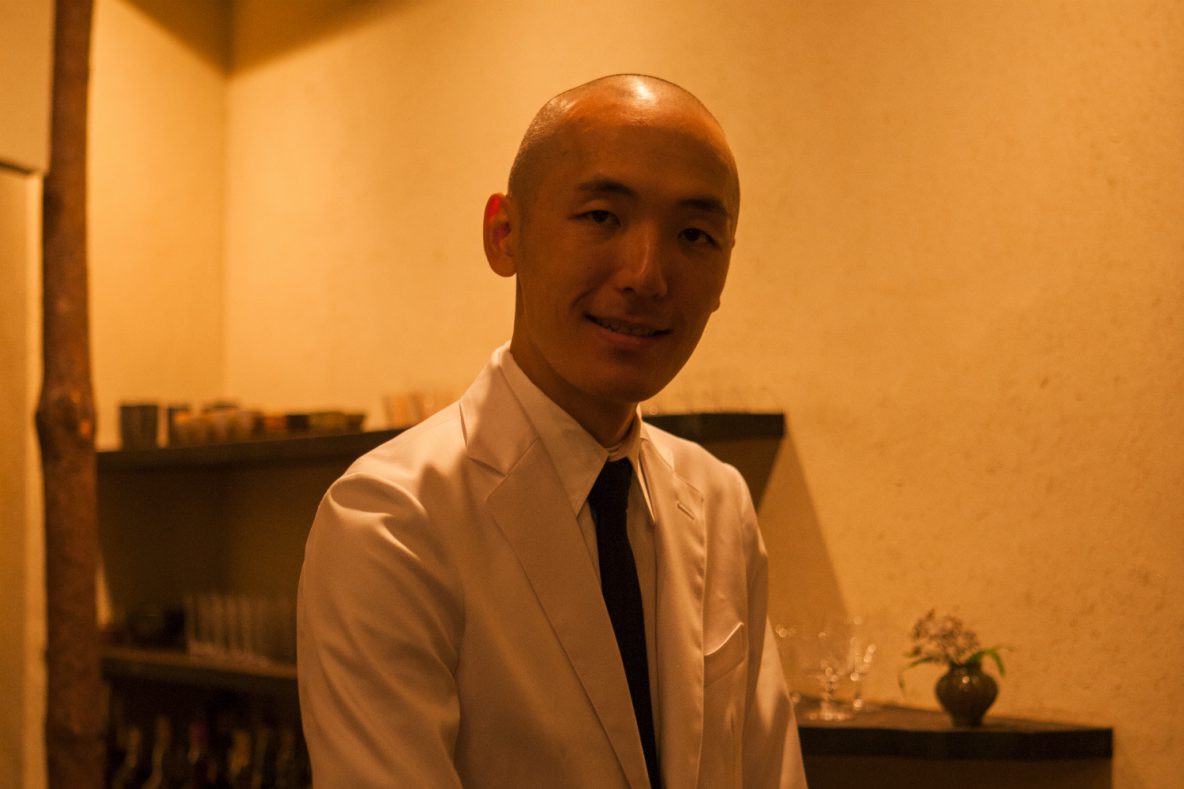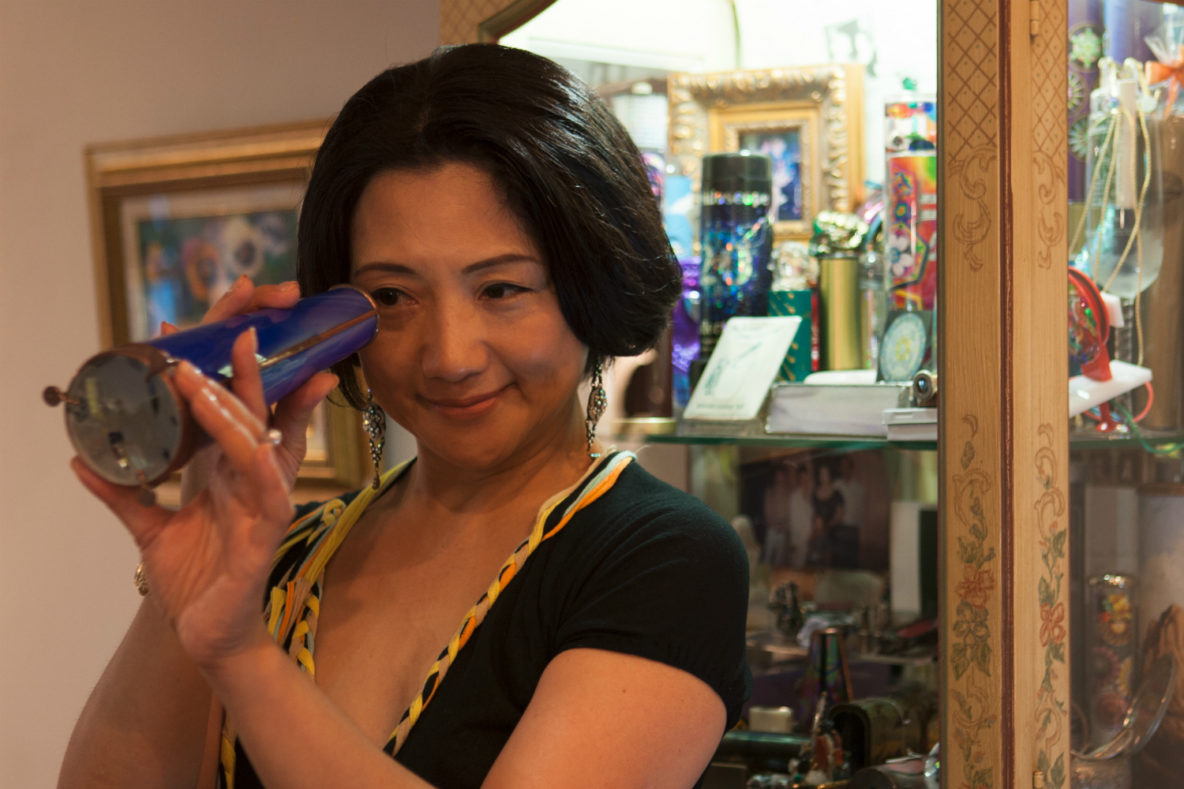Gen Yamamoto is a classically trained bartender, though you might not guess it. He has dispensed with many of the rudiments of his profession: he never shakes a cocktail; never stirs with ice in a mixing glass; never makes martinis, negronis or anything else you’ve heard of. And his drinks are usually tiny. At his bar, Yamamoto specialises in omakase courses of original cocktails. Guests choose four or six drinks, discuss their aversions or allergies, and leave the details to him. What he serves will depend on the season, the weather, and the time of day. The cocktails are presented on a lacquer tray, beside a freshly misted seasonal flower. The first soupçon is always refreshing, employing an ingredient such as cucumber juice or ginger. The second has more bite, often using Japanese citrus. And then there’s something more powerful again – perhaps with a fruit tomato, and a gin or shochu. The courses build and build in texture and density, to their dessert-like conclusion. There are many bartenders that show the season in their drinks. They’ll use watermelons in the summer or persimmons in the autumn. Yamamoto takes the idea so much further: having forged ties with farmers, he consults with them about what’s being harvested. He says he’s interested in anything delicious, but is more inspired when the ingredient is a little unusual. He buys lesser-known Japanese citruses, such as hebesu, sumikan or hassaku, and has been known to use fava beans, wasabi, celery root, and fennel. He prepares them more in the manner of a chef than a bartender, simmering reductions, creating compotes, and using copper pans and digital thermometers. Yamamoto devised his first cocktail tasting menu in New York while working as bar manager at Brushstroke, a kaiseki-inspired collaboration between chef David Bouley and Japan’s Tsuji Culinary Institute. “When I moved to America, the ingredients tasted different, the ambience was different, and the environment was different. I started to focus on natural ingredients, at first just mixing them with vodka — a vodka apple martini or something like that. It didn’t work. Each ingredient tasted out of balance. So little by little I changed them.” The mixologist questioned everything he had learned. Why does a cocktail have to be chilled? Why must the elements be integrated? Who says a serving should be 70 millilitres or more? And does the alcohol have to kick so hard? He found Japanese-originated alcohol such as sake or shochu often paired better with his produce than 80 proof spirits. He realised that too much chilling could mute the flavours. And he discovered you can have too much of a good thing. “I make a drink with kumquats, for example,” he says. “If it is a large drink, it’s too thick, too heavy.” His style was taking shape, but Yamamoto couldn’t execute it properly in the U.S. “People there worried more about the speed of service than the quality of the result,” he says. So he moved back home to Tokyo and … Read More
Kaleidoscope Mukashi-kan
The literal translation of the Japanese word ‘mangekyou, ’10,000 blossom mirror’ is such a perfect description of kaleidoscopes that, according to the owner of Japan’s first specialty shop selling them, “Japanese people commonly believe they invented them.” Indeed, if the country feels like a natural home for mementos like these then, rich with nostalgia, refinement and quiet romance, Miti Araki’s store suggests it is so. Located in Azabu-Juban, a village-like corner of central Tokyo, Kaleidoscope Musashikan has been in business for more than two decades. Back when she opened it, Araki was a recently divorced mother taking care of her daughter, Kiki. “I started to see the world through my little girl’s eyes,” Araki says, recalling moments they spent looking through a magnifying glass or playing with a mirror. “That act of becoming absorbed in something was vital. I had no idea how or what, but I knew I wanted to open a shop based on looking at things.” Kaleidoscopes were actually invented in the early 1800s by Scottish scholar Sir David Brewster, and soon enchanted the European upper classes. But before Araki opened her shop, all that was available in Japan were cardboard tubes of coloured plastic beads found at souvenir stands. She asked a friend in New York to visit a kaleidoscope specialist retailer there and send as many of them back to Japan as her savings would allow. Before long she had refashioned the café where she worked to become Kaleidoscope Mukashi-kan. The made up word mukashi-kan means ‘hall of the past’, and Araki’s shop feels like it could be the setting for a children’s fantasy, with storybook furnishings, a wall painted like the sky, and a shop assistant wearing a natty pink jacket. A sculpture outside shows the legs of a man appearing to fall into the unknown, and inside, every shelf and table is crowded with kaleidoscopes. The simplest model is the open-ended teleidoscope that multiplies whatever it’s pointed at, while others create infinite patterns using spinning wheels, sliding vials of liquid and glitter, or myriad tiny objects, such as microscopic seashells. Those with sleek brushed stainless steel exteriors are made in Japan; the detail of what is in the eye of the beholder is dazzling, thanks to viewing chambers filled with abstract flakes of exposed colour film. Araki won’t make recommendations, saying choosing one is intensely personal. “It depends as much on what’s inside the person holding the kaleidoscope as what’s inside the instrument,” she says. Indeed her own experience of kaleidoscopes has changed. Where once they stimulated her, in the worrying days after the 2011 earthquake, they became cathartic. “I believe every time you peer into a kaleidoscope, you see something different,” she says. “But then, shouldn’t that be true of almost everything in life?”


